Eat In or Take Away
Sriram Aylur, head chef of Michelin-starred restaurant Quilon, talks us through India’s regional flavours.
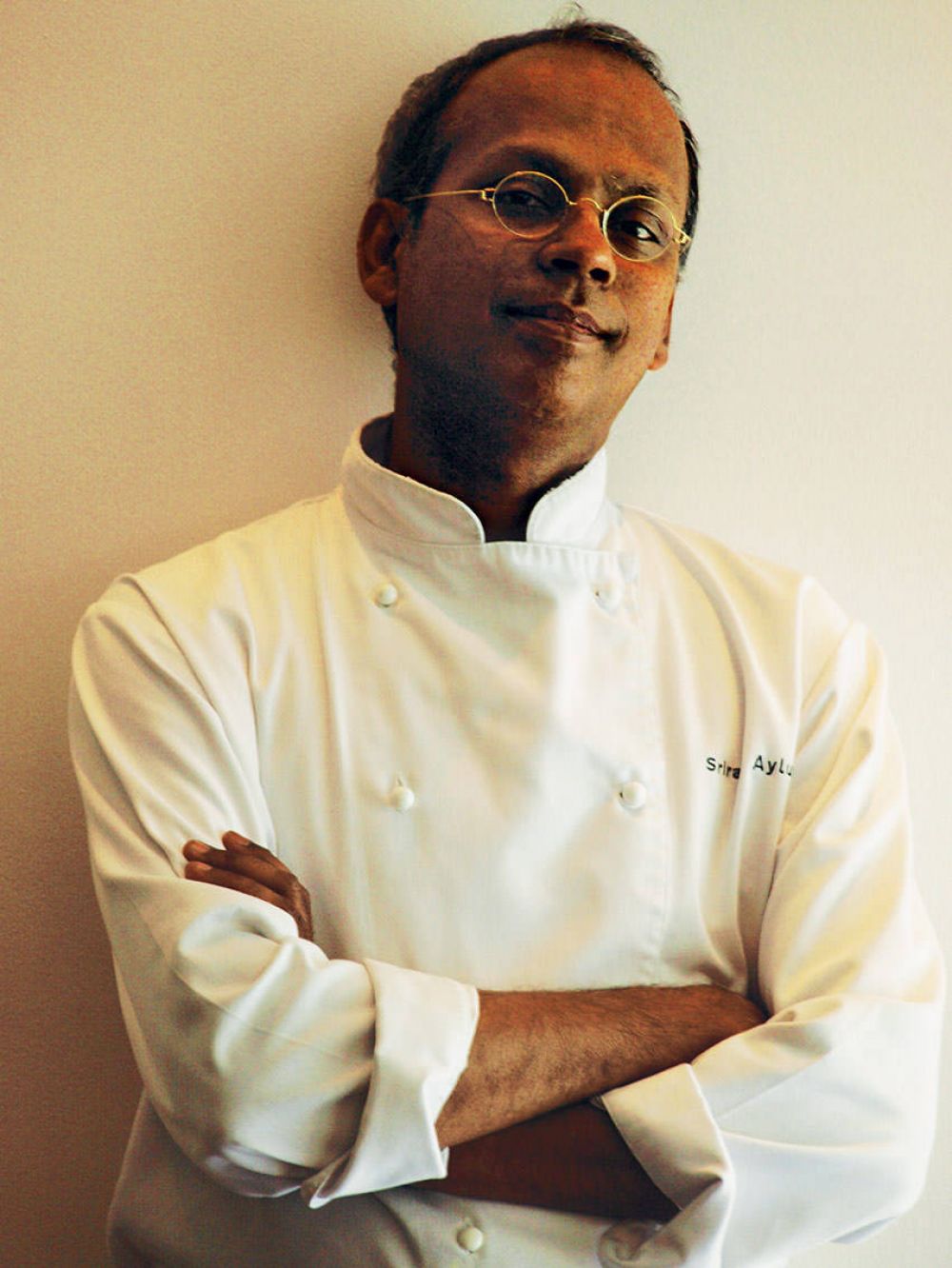
Sriram Aylur, head chef of Michelin-starred restaurant Quilon, talks us through India’s regional flavours.
The availability of ingredients, people’s religious beliefs and their level of affluence. The food on this sub-continent is made up of hundreds of different regional cuisines but there are certain characteristics common to them all. One of these is the extensive use of local spices and herbs. What is particularly unique about India is that people believe there is a greater purpose to ingredients beyond just adding flavour; they believe each one reacts in a specific way with your body. For example, turmeric is favoured for its antiseptic and healing properties, while fenugreek aids digestion. To better understand Indian food and the spices used, I have broken the country down into my five following food regions.
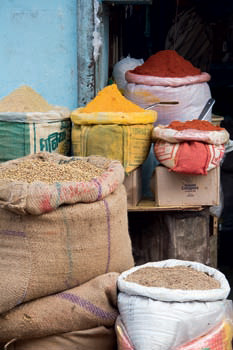
If there was a word to describe East Indian food, it would be simple, but this is not to suggest a lack of flavour in anyway. Bengali cooking is based on the use of panch phoran (five spices), better known as cumin, onion, mustard, fennel and fenugreek seeds. This spice blend is the cornerstone of the cuisine and can be found in most curries. The region’s traditional dishes include momos (steamed meat- or vegetable-filled dumplings) and begun bhaja (fried, spiced aubergine). Many dishes are also characterised by the liberal use of sarson (mustard seeds). These are mixed with turmeric, oil, chilli and salt to create kasundi (a pungent mustard paste) also used to marinate hilsa, a freshwater fish, which is then wrapped in banana leaf and steamed. The people here are known to have sweet tooths, so there are plenty of desserts to choose from; a favourite is sandesh (a light sweet made with curdled milk).
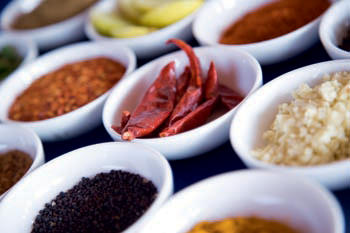
The idea that ‘you are what you eat’ is believed throughout India but even more so in South India. A lot of thought goes into getting the best from local ingredients. Fruit and vegetables like jackfruit, bananas, mangoes, snake gourd and chillies are used in abundance. Family meals are centred around rice-based dishes and sambar (yellow lentil soup). Food is light and spicy; coconut is used a lot, especially in Kerala on the south-west coast, as well as peppers, coriander, curry leaves, tamarind and fenugreek seeds. Fresh fish like pearl spot fish and pomfret are easy to catch and cook. Traditional dishes include dosas (savoury, crispy pancakes served with coconut chutney and a spiced potato mix) and idlis (fluffy, steamed rice-flour cakes served with spicy sambar).
Restaurant recommendations:
Banana Leaf, Croydon As you’d expect, fish plays a central role in this intimate family-run restaurant. Even without the frills, Banana Leaf has won numerous awards including London Curry Chef of the Year. Mains from £3.50. 020 8688 0297, bananaleafcroydon.co.uk
Chennai Dosa, nationwide Although a chain, these cheapeat southern Indian outlets are a favourite with those looking for authentic food without a big price tag. Vegetarian food is king, but certain branches (such as west Croydon) also serve meat dishes. Mains from £1.85. 020 8665 9192, chennaidosa.com
Radhakrishna Bhavan, London With coconut tree-lined beachscapes on the wall and Indian costumes and statues scattered around for decoration, this place certainly has bags of character. Good value and often busy, it’s a fun place to eat but it also offers a decent takeaway service too. Mains from £4.95. 020 8682 0969, keralagroup.co.uk
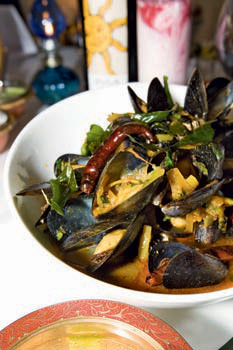
North Indian cuisine is known for its thick, rich curries; after all, this is where the ubiquitous chicken korma comes from. In areas like Rajasthan and Punjab, dishes were especially created to impress royalty, and today you can still see evidence of this grandeur in some of the food. Cashews, almonds, saffron and varakh (silver leaf) are all luxury ingredients found in North Indian food, along with cardamom, cloves, cinnamon, coriander, black cumin and chillies. However, in some areas, such as Himachal Pradesh, the cooking is much simpler: think daal and chawal (plain rice and pulses). Bread takes precedence over rice on the plate – you’ll always find tandoori roti and naan and parathas on the menu, all of which can be served with kundan kaaliya (which translates as ‘golden meat’) or mutter paneer (curry with green peas and soft cottage cheese).
Restaurant recommendations:
Bombay Brasserie, London Definitely one for the more discerning Indian food-lover. This restaurant’s reputation for fine dining has had South Kensington locals coming back for almost 30 years. Mains from £9. 020 7370 4040, bombayb.co.uk
Tamasha, Bromley Not only does this place offer good food and a dining room with ceiling fans, rattan chairs and photographs of the Raj, it even has a Cricket Bar dedicated to the great game. Mains from £10.95. 020 8460 3240, tamasha.co.uk
Ithiaas, Birmingham Voted Best UK Curry Restaurant, subtlety isn’t on the menu but palatial splendour with acclaimed service is. Mains from £9.95. 0121 212 3383, itihaas.co.uk

The cuisine of Western India is as diverse as its geography. In Maharashtra, you will find the prevalence of unique spices such as lemon leaf, along with ginger, garlic, capsicum and coconut. Snacking is a favourite pastime here and some of the tastiest examples include vada pav (an Indian-style burger stuffed with a spicy deep-fried potato patty and served with a green chilli chutney). Bombay is a melting pot of Indian flavours influenced by immigrants from all over the world from Parsi (Persian) food like sali boti (lamb with crispy potato strips) to butter chicken from North India. Goan cuisine is dominated by the use of rice, coconut and seafood. Here, you’ll find kokum (a sweet and salty tasting fruit) that is said to counteract the heat of spices, as well as tamarind, chillies, cardamom, cloves and garlic. This region is heavily influenced by its Portuguese history, which is evident in dishes such as vindaloo, a curry renowned for its spiciness and balchao (a fiery-spiced masala) used to pickle meat or prawns.
Restaurant recommendations:
Shree Krishna Vada Pav, Hounslow This is all about Indian snacks and freshly made vada pav (for just £1). With just five tables at this eatery, unless you’re willing to wait, this is more of a grab-and-go option. Mains from £3.50. 07843 247 432
Indian Zing, Indian Zest, Indian Zilla, Greater London The first solo venture of ex-Chutney Mary chef Manoj Vasaikar was the chic Indian Zing in west London. A fine-dining neighbourhood restaurant that’s been lauded by even the sternest of food critics, such was its success Vasaikar followed with a second branch in Sunbury-on-Thames (Zest) and then a third in Barnes (Zilla), all based on the same ethos of creative cuisine with strong traditional roots. While not cheap, prices are reasonable, indianzing.co.uk
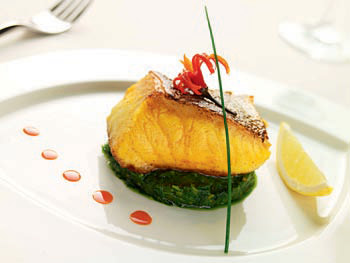
Gujarati food is predominantly vegetarian, and yet each dish is not only interesting but also well balanced. Expect to find plenty of coriander, cumin, ghee, onions, jaggery, cinnamon, bay leaves and cardamom in most of the dishes. Here, food is served on a thali (a round plate) containing roti, dal (a lentil gravy) and shaak (vegetarian curries), which can feature anything from cauliflower and eggplant to chickpeas, rice and lastly pickles – this is standard everyday fare. Typical Gujarati dishes include dhokla (a fermented batter of gram flour) and undhiyu (a vegetable medley with lima beans, eggplant, potatoes and steamed dumplings). Gujaratis are also known for their ability to take desserts from all over India and adapt them to their liking, one of the most popular being shrikhand (made with strained yoghurt, cardamom and saffron), originally from Maharashtra.
Restaurant recommendations
Ram’s, Harrow Here you’ll find a lengthy menu offering some of the best vegetarian dishes around. Don’t expect fine dining, this critically acclaimed restaurant is all about the food. Mains from £3.90. 020 8907 2022, ramsrestaurant.co.uk
Meera’s Village, Harrow Another restaurant that goes beyond just producing quality regional vegetarian meals. It features paintings, authentic dress and music – and is a lively place at the weekends. Check out the two ‘Xpress’ branches in Kenton and Finchley. Mains from £5.99. 020 8952 5556
Sakonis, Wembley Very popular with the local Indian community, it offers a simple dining experience (easy-wipe tables etc). Choose from the menu (which includes 50 à la carte choices) or go for the buffet, which also has extensive options. Buffet dinner £11.99. 020 8903 9601, sakonis.co.uk
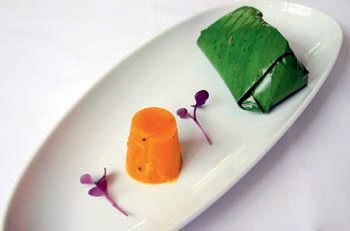
Subscribe and view full print editions online... Subscribe